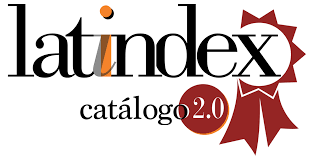Volta à infância: leitura des-verbal e formação de sentidos nos ambientes de trabalho de empresas de tecnologia / Back to childhood: non-verbal reading and making sense in workplace technology companies
DOI:
https://doi.org/10.5783/revrrpp.v10i20.676Keywords:
comunicação dentro das organizações, discursos organizacionais, leitura des-verbal, ambientes de trabalho inovadores, infânciaAbstract
Resumo
Referências à infância podem ser facilmente percebidas em empresas da atualidade, especialmente as que tomam como modelo os ambientes de trabalho descontraídos dos escritórios do Vale do Silício, na Califórnia (EUA). Compreender o modo como estes sentidos são construídos, envolvendo os coenunciadores organização e funcionários, é nosso objetivo neste artigo. A partir da observação dos discursos organizacionais infantis, mostrados nestes escritórios inovadores, e tomando como guia a leitura por similaridade do material “des-verbal”, como propõe Lucrécia Ferrara (2001), entendemos que as percepções dos funcionários ante os símbolos infantis remetem a memórias distantes e prazerosas. Deste modo, tal experiência pode ser associada às vivências do funcionário dentro do ambiente de trabalho e, consequentemente, contribuir a uma imagem corporativa positiva e desejada pela empresa.
Palavras chave: comunicação dentro das organizações, discursos organizacionais, leitura des-verbal, ambientes de trabalho inovadores, infância.
Abstract
Nowadays, references to childhood can be easily perceived in workplace, especially in companies that take as a model the innovative, relaxed offices in Silicon Valley, California (USA). Both the architecture and the decoration of these workplaces suggest new senses, different from those formed in traditional offices. The employees of these companies, in turn, construct imaginary representations about the office - and, consequently, about the company - using all this shown material, in addition to their own experiences, memories, sensations and affections. In these communicational interactions, the highlight is the non-verbal language (Ferrara, 2001), where that childhood symbolic objects produce senses (Orlandi, 2012), suggest interpretations (Santaella, 2008) and create emotional bonds (Silva, 2012) in everyday work life. Studying these relationships that involve all the human senses in the communication process within organizations is the main theme in this article. As the objective of this research, we seek to understand how these organizational discourses are constructed in order to involve employees emotionally using their own experiences, recovered by childhood symbolic objects. Summing up: how are these shown discourses, involving childhood memories, in the work routine, materialized? As corpus of our research, we chose to observe and analyze the workplace of three multinationals from technology sector, represented by their Brazilian offices: Google-Belo Horizonte, in Minas Gerais, OLX-Rio de Janeiro and LinkedIn-São Paulo. The material for analysis was collected from images available on the corporate websites of these companies and on the websites of the architecture firms responsible for the architectural projects created for these offices. Collected data as well as its organization and analysis were based on Lucrécia Ferrara's proposal of reading non verbal messages, contextualizing in time and space each researched places, searching for "estrangement" - non-homogeneous elements or situations - and find out the "dominant" - the conflicting element in the observed environment (Ferrara, 2001). The non-verbal reading are based on the memories recovered not only by the act of seeing something, but also for hearing, smell, taste and touch. And these memories can be used to create new sensations and emotions - positive ones - for new perceptions of the corporate 'world'. In the three companies researched, which hired architects and decorators to transform the work space according to the companies' world headquarters guidelines, we found the non-homogeneous in the office organization itself. In this innovative interior, the presence of childhood symbols appear as dominant. This is the case of the Google-Belo Horizons popcorn cart, the giant slide at OLX-Rio de Janeiro and elements such as a swing at LinkedIn-São Paulo. We understand that employees' perceptions of childhood symbols refer to distant and pleasurable memories, brought by remembrance to other contexts and situations. And these memories and feelings are activated not only by the sight of these objects, but also by smell, taste - like as the popcorn cart - and by touch - as in the act of slipping or rocking. It is essential to highlight that mental and symbolic representations have an emotional charge brought about by specific moments, lived in certain contexts and recovered by memory through associations by similarity. This reading of the non-verbal material transfers the happy memories of employees to the workplace, to the company, and can contribute to the formation of meanings of pleasure and well-being for corporate world. The bridge between employees and the organization, for this image formation, is the symbolic material.
Keywords: public relations, organizational discourses, non-verbal reading, innovative workplace, childhood.
Downloads
References
ALMEIDA, A.L. de C. (2009). Identidade, imagem e reputação organizacional: conceitos e dimensões da práxis. En: Kunsch, M. Comunicação Organizacional – linguagem, gestão e perspectivas. Vol.2. São Paulo, Brasil: Saraiva.
BILTON, N. (2013). A eclosão do Twitter – uma aventura de dinheiro, poder, amizade e traição. São Paulo, Brasil: Portfolio Penguin (e-book).
CABRAL, M. (sem data). Arquitetura caótica. Galeria da Arquitetura (on-line). Recuperado el 08 de Julio de 2020, de https://www.galeriadaarquitetura.com.br/projeto/dmam_/linkedin/2696.
COSTA, J. (2009). Imagen Corporativa em el siglo XXI. Buenos Aires, Argentina: La Crujía.
COSTA, J. (2003). Diseñar para los ojos. La Paz, Bolivia: Grupo Editorial Design.
DE TONI, D. (2009). Administração da imagem de organizações, marcas e produtos. En: Kunsch, M. Comunicação Organizacional – histórico, fundamentos e processos. Vol.1. São Paulo, Brasil: Saraiva.
FERRARA, L. (2001). Leitura sem palavras. São Paulo, Brasil: Editora Ática.
GOMES L. B. (2017). Por uma (nova) leveza nas organizações? En: Anais 40º Congresso Brasileiro de Ciências da Comunicação. Curitiba, Universidade Positivo. Recuperado el 11 de julio de 2019, de http://portalintercom.org.br/anais/nacional2017/resumos/R12-2136-1.pdf
KIRKPATRICK, D. (2011). O efeito Facebook. São Paulo, Brasil: Intrínseca.
MARQUEZ, A. (sem data). Desapega do tradicional. Galeria da Arquitetura (on-line). Recuperado el 13 de Julio de 2020, de https://www.galeriadaarquitetura.com.br/projeto/scaa_/nova-sede-da-olx/4398
MORGAN, Jacob (2017). The Employee Experience Advantage: how to Win the War for Talent by Giving Employees the Workspaces they Want, the Tools they Need, and a Culture They Can Celebrate. New Jersey, USA: Wiley (e-book).
ORLANDI, E.P. (2012). Análise de Discurso – princípios & procedimentos. São Paulo, Brasil: Pontes Editores.
ORLANDI, E.P. (1997). As formas do silêncio: no movimento dos sentidos. São Paulo, Brasil: Editora Unicamp.
PÊCHEUX, M. (1997). Análise automática do discurso (AAD-69). En: Gadet, F e Hayk, T. Por uma análise automática do discurso: uma introdução à obra de Michel Pêcheux. São Paulo, Brasil: Editora Unicamp.
PEREZ, K. (2020). Prazer em lhe conhecer, eu sou a Y - reflexões sobre as (re)construções do ethos em uma empresa de tecnologia. En: Silva, M.P. Ecologia da Comunicação Organizacional. São Paulo, Brasil: Provocare Editora.
PETERS, M. (2000). Pós-estruturalismo e filosofia da diferença – uma introdução. Belo Horizonte, Brasil: Autêntica.
PITTA, D.P.R. (2017). Iniciação à teoria do imaginário de Gilbert Duran. Curitiba, Brasil: CRV.
SANTAELLA, L. e WINFRIED, N. (2008). Imagem – cognição , semiótica, mídia. São Paulo, Brasil: Iluminuras.
SANTAELLA, L. (1999). The Three Peirce’s Categories and the Three Lacan’s Registers. Psicologia USP, 10(2), 81-91.
SANTAELLA, L. (2012). A leitura das imagens. São Paulo, Brasil: Melhoramentos.
SCHMIDT, E. e ROSENBERG, J. (2015). Como o Google funciona. Rio de Janeiro, Brasil: Intrinseca (e-book).
SILVA, M. R. (2012). Na órbita do imaginário – comunicação, imagem e os espaços da vida. São Paulo:, Brasil: Editora UNIP.
VILLAFAÑE, J. (2008). La gestión profesional de la imagen corporativa. Madrid: Ediciones Pirámide.
WILLIAMS, J. (2012). Introdução: O que é Pós-estruturalismo. En Williams, J. Pós-estruturalismo. Rio de Janeiro, Brasil: Vozes (e-book).
Downloads
Published
How to Cite
Issue
Section
License
Authors publishing in this journal agree to the following terms:
a. Authors retain copyright and grant the journal the right to be the first publication of the work as licensed under a Creative Commons Attribution License that allows others to share the work with an acknowledgement of authorship of the work and initial publication in this journal.
b. Authors may separately enter into additional arrangements for non-exclusive distribution of the version of the work published in the journal (e.g., placing it in an institutional repository or publishing it in a book), with an acknowledgement of initial publication in this journal.
c. Authors are allowed and encouraged to disseminate their work electronically (e.g. in institutional repositories or on their own website) before and during the submission process, as it can lead to productive exchanges, as well as earlier and higher citation of published work (see The Effect of Open Access).




